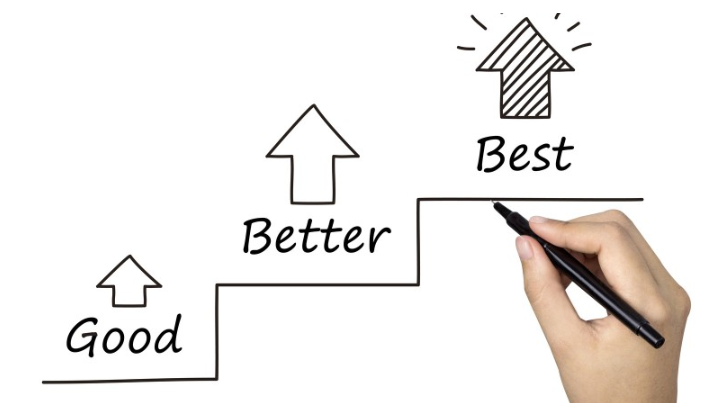In today’s competitive market, businesses must continually innovate and find ways to cater to the diverse needs and wants of their customer base. One effective strategy is the “Good, Better, Best” (GBB) pricing model. This model offers products or services at three distinct levels, each with different features and price points. The strategy appeals to different segments of the market and can be a powerful tool in marketing and sales. But what is it that makes this three-tiered approach so effective? The answer might lie in our brains.
The Good, Better, Best Strategy Explained
1. Good: This version is the entry-level offering, priced at the most affordable level. It offers the essential features needed to satisfy the basic requirements of the customer. Targeted at price-sensitive customers, this option often includes only the core features without any additional bells and whistles.
2. Better: This version is a step up from the entry-level, providing additional features or improved quality. It’s targeted at customers who are willing to pay a little more for enhancements that provide extra convenience or added value. The price point for the “better” option is higher than the “good” level but still offers good value for what’s included.
3. Best: This is the premium option, providing the highest quality, features, or service levels. It’s targeted at customers looking for the very best that the product or service can offer and who are willing to pay a premium for that quality. This option may include exclusive features, superior materials, extended warranties, or other value-added services.
The Neuroscience Behind Three Options
The human brain often struggles with an overwhelming number of choices, a phenomenon known as “choice overload.” Offering too many options can lead to indecision and reduced satisfaction. The GBB strategy simplifies the decision-making process by offering three clear choices, which align with the brain’s natural propensity for categorization and comparison.
The neuroscience behind this can be traced to several factors:
1. Cognitive Load: When presented with too many choices, the cognitive load or mental effort required to evaluate each option increases. By limiting options to three, the brain can more easily compare and contrast, making the decision process more streamlined.
2. Relativity and Comparison: Humans tend to compare choices relative to one another. By structuring three options, the brain can compare the “Good” against the “Better” and the “Better” against the “Best,” helping to create clear distinctions and preferences.
3. Optimal Complexity: Three options strike a balance between too simple (where there is not enough choice) and too complex (where there are too many choices). This creates an optimal level of complexity that challenges the brain without overwhelming it.
Advantages of the Good, Better, Best Strategy
– Appeals to a Broader Market: By offering different versions, the company can cater to different customer needs and budgets, reaching various market segments.
– Eases Decision Making: By presenting three clear options, customers can quickly assess which level is right for them based on their needs and budget.
– Potential Upselling: If customers are attracted by the “good” option, sales teams might be able to upsell them to the “better” or “best” option by demonstrating the added value.
– Competitive Positioning: This strategy can help differentiate the offerings from competitors, especially if the additional features or quality at each level are well-aligned with what different customer segments value.
Potential Disadvantages
– Complexity: Managing three versions of a product can add complexity in terms of production, inventory management, and marketing.
– Cannibalization: If not well-differentiated, the different levels might compete with each other, reducing the overall profitability.
The Good, Better, Best strategy goes beyond mere marketing and sales tactics. By aligning with the way the human brain operates, it taps into the neurological processes that govern decision-making. By limiting choices to three, it creates a scenario that is cognitively appealing and avoids the paralysis that can come with too many options.
In a world where businesses are continually looking for ways to connect with their customers, understanding not just what customers want but how they think can be a potent tool. The GBB strategy, with its three-tiered approach, resonates with the way our brains work, offering a psychologically sound framework that appeals to diverse market segments. By weaving neuroscience into this business strategy, companies can create more meaningful connections with their customers and drive success in today’s complex market landscape.



